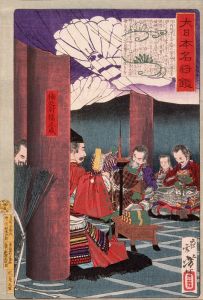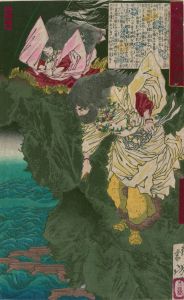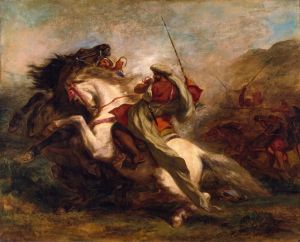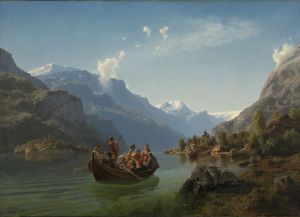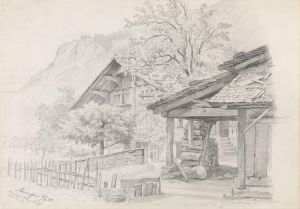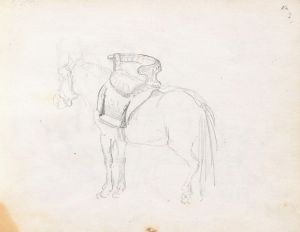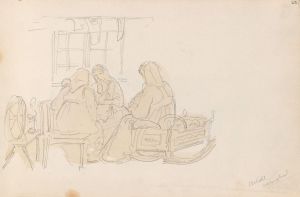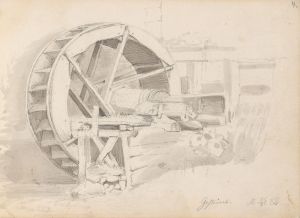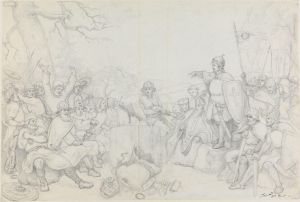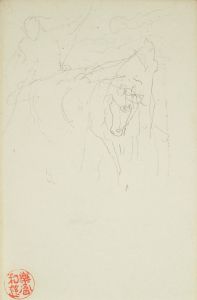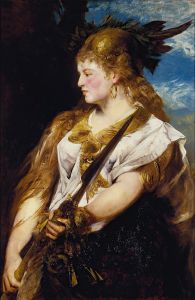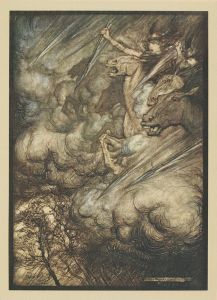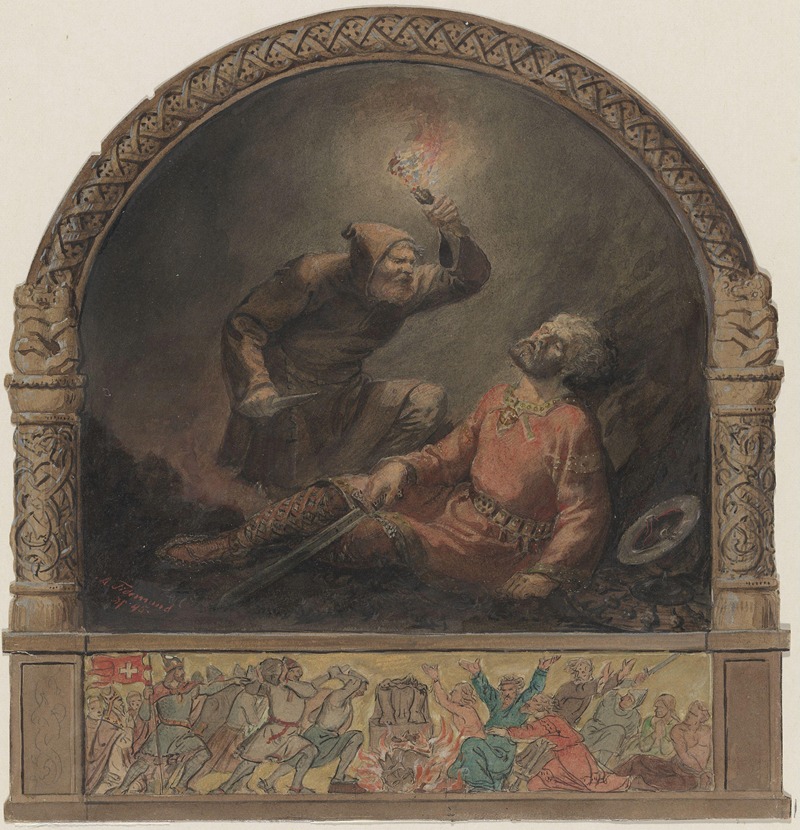
Håkon Jarl og Kark
A hand-painted replica of Adolph Tidemand’s masterpiece Håkon Jarl og Kark, meticulously crafted by professional artists to capture the true essence of the original. Each piece is created with museum-quality canvas and rare mineral pigments, carefully painted by experienced artists with delicate brushstrokes and rich, layered colors to perfectly recreate the texture of the original artwork. Unlike machine-printed reproductions, this hand-painted version brings the painting to life, infused with the artist’s emotions and skill in every stroke. Whether for personal collection or home decoration, it instantly elevates the artistic atmosphere of any space.
Adolph Tidemand's painting "Håkon Jarl og Kark" (Håkon Jarl and Kark) is a significant work of 19th-century Norwegian art that portrays a dramatic moment from Norse history. Created in 1850, the painting reflects Tidemand's interest in historical and folkloric themes, which were central to the Romantic Nationalism movement in Norway during that period. This movement sought to revive and celebrate Norway's cultural heritage, particularly through art, literature, and music.
The painting depicts a scene from the saga of Håkon Sigurdsson, also known as Håkon Jarl (Håkon the Earl), a powerful Norwegian ruler during the late 10th century. Håkon Jarl ruled much of Norway as a vassal of the Danish king Harald Bluetooth but later declared independence. His reign is associated with resistance to the spread of Christianity in Norway, as he remained a staunch adherent of the old Norse pagan religion.
The specific moment captured in the painting is drawn from the account of Håkon Jarl's final hours, as recorded in Snorri Sturluson's Heimskringla, a 13th-century collection of sagas about Norwegian kings. According to the saga, Håkon Jarl was betrayed and hunted by his enemies, including Olaf Tryggvason, a Christian leader who sought to claim the Norwegian throne and convert the country to Christianity. In his desperation, Håkon sought refuge in a pigsty with his thrall (slave), Kark.
The painting shows the tense and fateful interaction between Håkon and Kark as they hide together. According to the saga, Håkon, fearing betrayal, becomes increasingly paranoid and distrustful of Kark. Ultimately, Kark kills Håkon in his sleep, hoping to win favor with Olaf Tryggvason. However, Kark's betrayal does not save him; he is later executed by Olaf.
Tidemand's work captures the psychological intensity of this moment, emphasizing the fear, tension, and moral ambiguity of the characters. The dark, confined setting of the pigsty adds to the atmosphere of claustrophobia and impending doom. The painting is notable for its detailed rendering of the figures and its dramatic use of light and shadow, which heighten the emotional impact of the scene.
"Håkon Jarl og Kark" is considered an important example of Norwegian Romantic art and reflects Tidemand's skill as a storyteller through visual means. The painting is housed in the National Museum of Art, Architecture and Design in Oslo, Norway, where it remains a key piece in the collection, illustrating the intersection of art, history, and national identity in 19th-century Norway.





